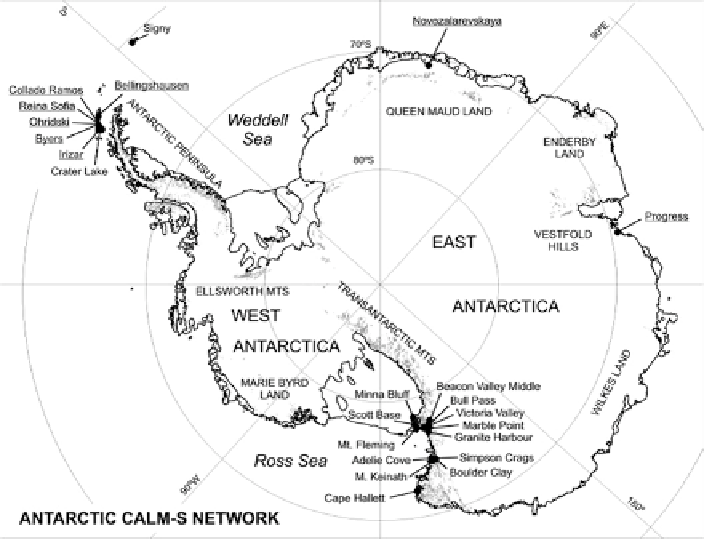Geoscience Reference
In-Depth Information
Fig. 2.4
Antarctic circumpolar monitoring network (CALM-S) (Vieira et al.
2010
)
in arctic soils (Shur et al.
2005
; Bockheim and Hinkel
2005
). This layer is the
uppermost, or near-surface, portion of the permafrost and meets the thermal
criteria defined above.
However, the maximum summer thaw depth tends to fluctuate from year to year
owing to interannual variations in components of the surface energy budget. During
occasional deep thaw penetration, ice in the near-surface permafrost melts and the
affected zone temporarily becomes part of the active layer. It is expected that these
episodic thaw events will occur at decreasing frequencies with greater depth; stated
another way, it suggests that the thaw recurrence interval increases with depth
within the transition zone (Shur et al.
2005
). On a time scale ranging from sub-
decadal to multi-centennial, all or some of this zone temporarily thaws. This is
viewed as a response to both interannual variation and possibly to longer-term
climate changes. The base of the transition zone, therefore, marks the position of
maximum thaw over the time interval; this can be considered the long-term perma-
frost table.
The affected portion of the transition zone returns to the frozen state following
episodic deep thaw. Owing to its unique history, it has characteristics that differ
from both the active layer above and the deeper permafrost below. As a result, the
transition zone has a large impact on soil and cryogenic structures and on the
thermal stability of permafrost.

